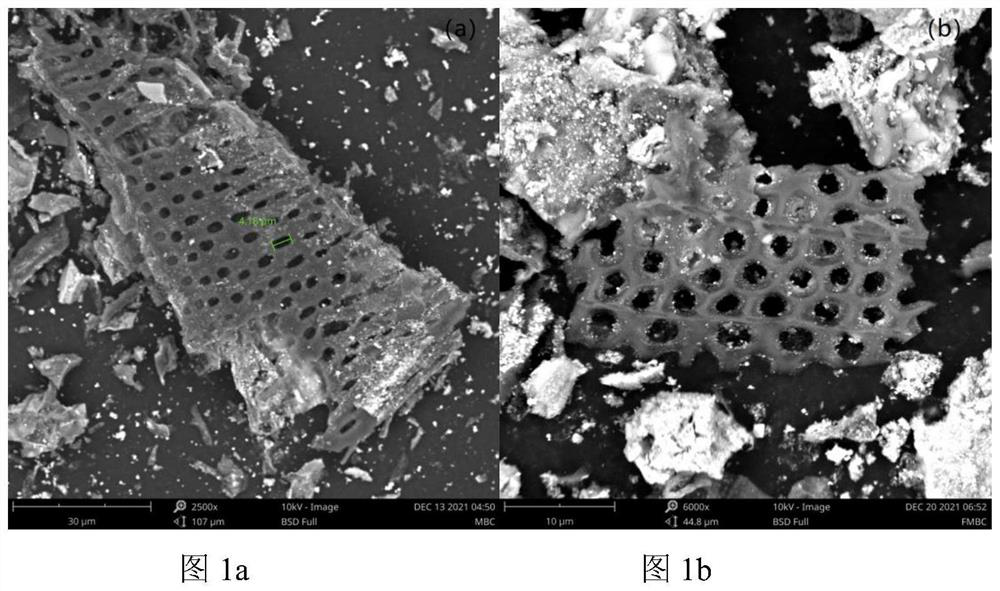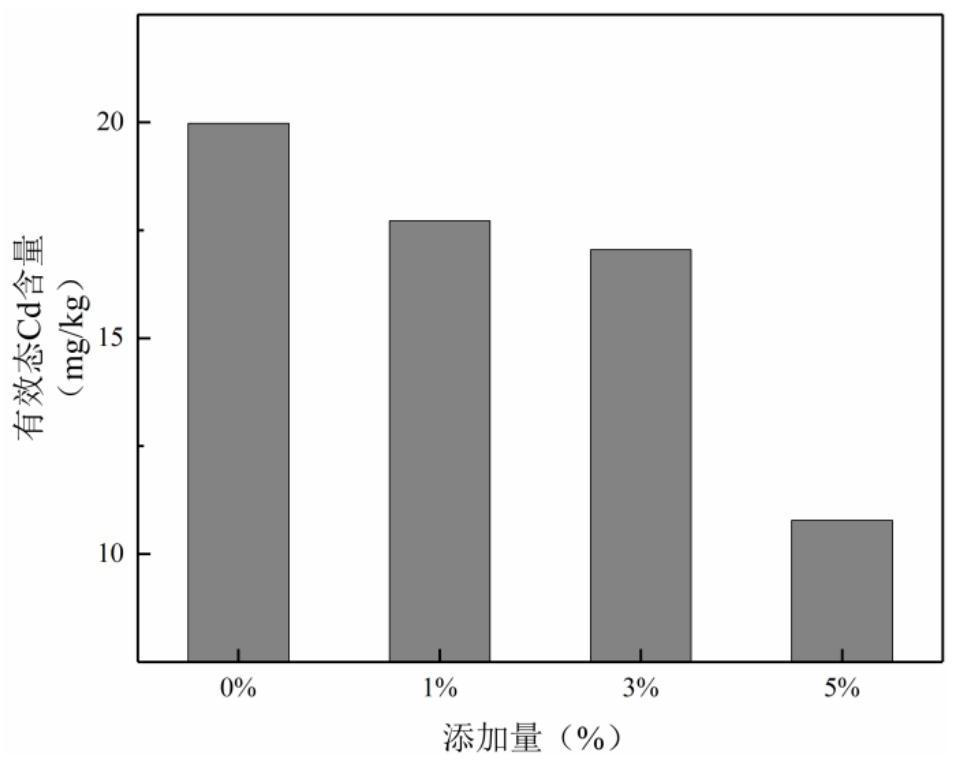Preparation method and application of ferromagnetism-rich biochar for synchronously treating cadmium and arsenic in freeze-thaw environment
A technology of synchronous treatment and biochar, applied in the direction of chemical instruments and methods, restoration of polluted soil, alkali metal compounds, etc., can solve the problems of soil heavy metal Cd-As compound pollution, etc., to improve the stabilization efficiency and increase the specific surface area The effect of large and high Fe content
- Summary
- Abstract
- Description
- Claims
- Application Information
AI Technical Summary
Problems solved by technology
Method used
Image
Examples
Embodiment 1
[0037] A preparation method of iron-rich magnetic biochar, comprising the following steps:
[0038] Step 1. After washing, the corn stalks are dried at 65° C. until the quality is constant, the outer crust is removed, and after crushing, the corn stalks are passed through a 1mm sieve to obtain corn stalk powder.
[0039] Step 2. Take 100g of treated corn stalk powder and immerse it in 2L of oxygen-free water (boil ultrapure water for 10min) containing 0.1mol·L -1 Fe 2+ and 0.2mol·L -1 Fe 3+ in the mixed solution. By adding 5mol·L -1 The pH of the NaOH solution was adjusted to 12, and during the adjustment process, the mixture was continuously stirred for 30 min to make it uniform. Cover the mouth of the container with plastic wrap, take a 60°C water bath for 2 hours, and then let stand at room temperature for 24 hours. Washed with water, filtered, and dried at 65°C for later use.
[0040] Step 3. Fill the crucible with the corn stalk powder processed in step 2, press in...
Embodiment 2
[0045] The F-MBC prepared in Example 1 was used to stabilize and repair the heavy metal polluted soil in Huludao, and the intermediate pollution characteristics of the heavy metal polluted soil in Huludao were shown in Table 1.
[0046] Table 1 Intermediate pollution characteristics of heavy metal polluted soil in Huludao
[0047]
[0048] Take 200 g of in-situ heavy metal contaminated soil samples in Huludao as one part, take several parts, add 0%, 1%, 3%, 5% of the soil sample weight of F-MBC in turn, mix well, and add 60ml of deionized water to make the soil sample. When the water content reaches 30%, the lost water is supplemented by weighing method every day to maintain the water content, and then placed in a constant temperature incubator at 25°C for 30 days. After 30 days, soil samples were taken, dried in the shade, and ground to analyze the concentration of available heavy metals. The stabilization effect of heavy metal cadmium and arsenic is as follows: Figure ...
Embodiment 3
[0052] Using the F-MBC prepared in Example 1, the stabilization and restoration experiments were carried out on the heavy metal polluted soil in Huludao under the conditions of different water contents.
[0053] Take 50 g of in-situ heavy metal contaminated soil samples in Huludao, add 5 wt% of the F-MBC prepared in the above example, set different moisture contents of 15% and 70%, and add 7.5ml and 35ml of deionized water for each of the two treatments. Mix well and replace lost water by weighing method every day. Incubate in a 25°C constant temperature incubator for 30 days. After 30 days, soil samples were taken, dried in the shade and ground to analyze the concentration of available heavy metals. The stabilization effect of heavy metal cadmium and arsenic is as follows: Figure 4-5 shown.
[0054] Depend on Figure 4-5 It can be seen that under the conditions of 15% and 70% moisture content, F-MBC still has a stable effect on soil heavy metal Cd-As. Depend on Figure...
PUM
 Login to View More
Login to View More Abstract
Description
Claims
Application Information
 Login to View More
Login to View More - R&D
- Intellectual Property
- Life Sciences
- Materials
- Tech Scout
- Unparalleled Data Quality
- Higher Quality Content
- 60% Fewer Hallucinations
Browse by: Latest US Patents, China's latest patents, Technical Efficacy Thesaurus, Application Domain, Technology Topic, Popular Technical Reports.
© 2025 PatSnap. All rights reserved.Legal|Privacy policy|Modern Slavery Act Transparency Statement|Sitemap|About US| Contact US: help@patsnap.com



